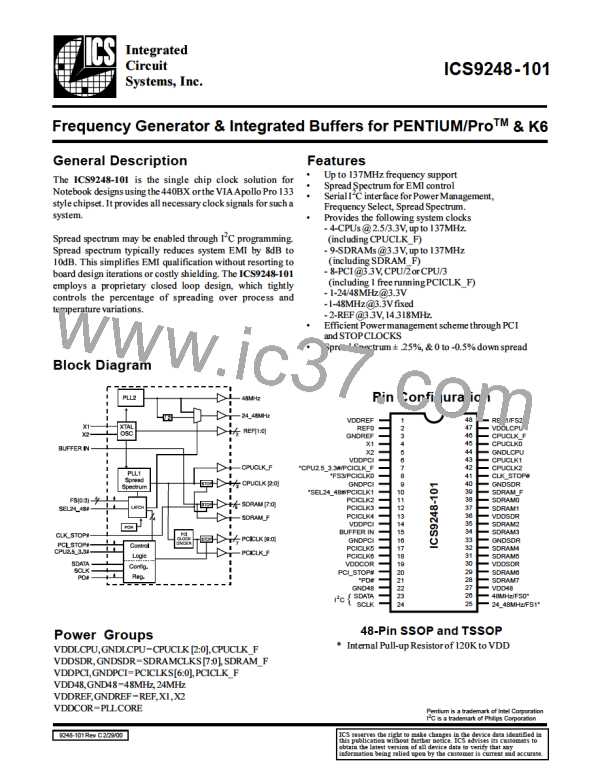ICS9248-101
Shared Pin Operation -
Input/Output Pins
These figures illustrate the optimal PCB physical layout
options. These configuration resistors are of such a large
ohmic value that they do not effect the low impedance clock
signals. The layouts have been optimized to provide as little
impedance transition to the clock signal as possible, as it
passes through the programming resistor pad(s).
The I/O pins designated by (input/output) on the ICS9248-
101 serve as dual signal functions to the device. During
initial power-up, they act as input pins. The logic level
(voltage) that is present on these pins at this time is read and
stored into a 4-bit internal data latch. At the end of Power-On
reset, (see AC characteristics for timing values), the device
changes the mode of operations for these pins to an output
function. In this mode the pins produce the specified buffered
clocks to external loads.
To program (load) the internal configuration register for these
pins, a resistor is connected to either the VDD (logic 1)
power supply or the GND (logic 0) voltage potential. A 10
Kilohm(10K) resistor is used to provide both the solid CMOS
programming voltage needed during the power-up
programming period and to provide an insignificant load on
the output clock during the subsequent operating period.
Figs. 1 and 2 show the recommended means of implementing
this function. In Fig. 1 either one of the resistors is loaded
onto the board (selective stuffing) to configure the devices
internal logic. Figs. 2a and b provide a single resistor loading
option where either solder spot tabs or a physical jumper
header may be used.
Fig. 1
10

 ICSI [ INTEGRATED CIRCUIT SOLUTION INC ]
ICSI [ INTEGRATED CIRCUIT SOLUTION INC ]